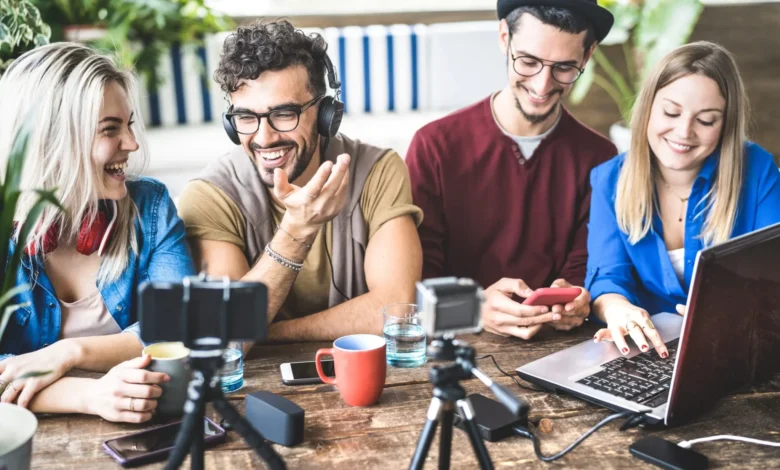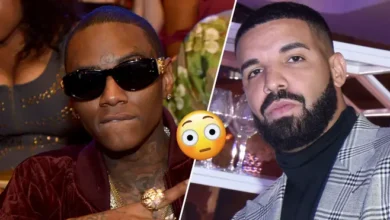Influencers GoneWild: Exploring the Double-Edged Sword of Fame in the Digital Age

Introduction
In the digital era, the term “influencer” has become synonymous with online power, marketing clout, and celebrity status. Platforms like Instagram, TikTok, and YouTube have birthed a new class of entertainers and tastemakers who can garner millions of followers—and dollars—by simply sharing their lives, passions, or opinions. But with that power comes scrutiny, temptation, and controversy. When influencers cross the line, the media and the public are quick to take notice.
The phrase “Influencers GoneWild“ isn’t just clickbait; it has become a shorthand for a larger cultural phenomenon. It points to a pattern where social media stars act recklessly, get caught up in scandals, or intentionally push boundaries in search of attention. This article dives into what Influencers GoneWild means, why it keeps happening, and what it says about fame, accountability, and online culture in 2025.
The Rise of the Influencer Economy
Before exploring the chaos, it’s important to understand how we got here. The influencer economy took shape in the late 2010s, fueled by the exponential growth of social platforms and the collapse of traditional advertising models. Brands realized they could reach more targeted audiences through relatable content creators than through billboards or TV commercials.
Influencers built loyal communities by being “authentic”—they showed their real homes, real faces, and often, their real flaws. But as fame grew, so did the stakes. Authenticity turned into performance. Privacy turned into publicity. And inevitably, some influencers took things too far.
What Does “GoneWild” Really Mean?
While the phrase “gone wild” originally gained notoriety in adult-themed media, today it is used more broadly. In the influencer context, it refers to:
- Scandalous behavior (public meltdowns, criminal activity, drug use)
- Sexual content for monetization (OnlyFans, suggestive content leaks)
- Online feuds with fellow creators or brands
- Dishonest endorsements or scams
- Violations of ethical boundaries, such as exploiting mental health for views
Some of this behavior is performative; other times, it’s the result of unchecked power. Either way, Influencers GoneWild is both a critique and a symptom of the social media machine that rewards outrage with engagement.
Notable Examples of Influencers GoneWild
1. The OnlyFans Pivot
Several mainstream influencers have turned to platforms like OnlyFans or similar subscription services to monetize their following through adult content. While many do so voluntarily, others have faced backlash for misleading promotions or exploiting fan emotions. Some high-profile examples include influencers who bait audiences with promises of risqué content, only to deliver nothing close, leading to mass refunds and public outcry.
2. The Scamming Saga
The influencer industry has also seen its fair share of scams—from cryptocurrency pump-and-dumps to fake giveaways. Audiences have grown weary of influencers promoting products they don’t believe in or that don’t work. In many “GoneWild” cases, influencers are caught selling overpriced junk, lying about the benefits, or disappearing with followers’ money.
3. Public Meltdowns and Toxic Fame
Burnout is real, and many influencers have crumbled under the weight of 24/7 content creation. Some lash out at fans, cry on live streams, or document their breakdowns in disturbing detail. While some fans are supportive, others accuse influencers of weaponizing mental health for clicks. These episodes often go viral, further eroding the line between reality and performance.
4. Party Culture and Legal Trouble
From partying during pandemics to DUIs and arrests, some influencers have behaved recklessly in public and private. The pressure to live a “larger-than-life” lifestyle often results in substance abuse, legal issues, and even harm to others. These cases reveal the dangers of a system that enables impulsive behavior without proper checks.
The Audience’s Role in the Madness
Interestingly, the same audiences who criticize “gone wild” behavior are often the ones who fuel it. Controversial posts get more likes. Drama gets more views. Outrage drives engagement. In this feedback loop, influencers learn that bad behavior = bigger audience.
In effect, viewers act as both judges and enablers. Social media thrives on spectacle, and influencers who go viral for wild antics are rarely canceled for good. Many return with rebrands, apologies, and even bigger paydays.
The Platform Dilemma
Major platforms like Instagram, YouTube, and TikTok claim to regulate content, but their algorithms reward attention, not morality. As long as content keeps users engaged, platforms are often reluctant to take strong action unless there’s widespread media attention or legal pressure.
This leaves room for:
- Content farms exploiting trending controversy
- Minors being exposed to mature content
- Toxic behavior becoming normalized
Until the platforms take stronger ethical stances, the cycle of Influencers GoneWild will likely continue.
Influencers Turned Cautionary Tales
Some influencers have become case studies in what not to do:
- Jake and Logan Paul: Known for pushing the envelope, both have had “gone wild” moments—from insensitive content to confrontations with authorities. They’ve since rebranded, but their past continues to shadow them.
- Belle Delphine: Merged meme culture with suggestive content and blurred the line between influencer and adult entertainer. Her viral stunts drew attention but also raised questions about manipulating parasocial relationships.
- Danielle Cohn: Accused of lying about her age while posting provocative content, sparking concerns about child exploitation and parental oversight in influencer marketing.
These examples underline the dangers of unchecked fame, especially when audiences are young and impressionable.
The Mental Health Toll
While some influencers spiral due to greed or arrogance, others break down from stress, pressure, and burnout. The constant demand for content, validation, and relevance creates a toxic environment.
Common issues include:
- Impostor syndrome
- Anxiety and depression
- Eating disorders due to body image pressures
- Fear of irrelevance
As influencer culture matures, conversations about mental health are becoming more central, though not always taken seriously by fans or platforms.
When “Going Wild” Becomes a Career Move
Surprisingly, going wild isn’t always a career-ender—it can be a launchpad. Scandal leads to coverage. Coverage leads to fame. Fame leads to brand deals.
Some influencers even engineer their own controversies, creating fake drama to spike engagement. While risky, these stunts often work—highlighting the moral bankruptcy of attention economies.
However, not everyone survives the gamble. Some face lawsuits, jail time, or mental collapse. The cost of virality can be high, and not every influencer bounces back.
The Push for Accountability
In recent years, there has been a growing push for accountability:
- Callout culture has led to greater scrutiny of influencer actions.
- Media watchdogs like Def Noodles, TeaSpill, and drama channels document and dissect every misstep.
- Fans demand transparency, especially when money is involved.
- Regulators are stepping in. The FTC now requires clear disclosures for sponsored content, and some countries are enforcing age restrictions on influencer content.
Despite these efforts, enforcement remains uneven. The influencer industry is still in a “Wild West” phase, where fame outpaces regulation.
The Future of Influencer Culture
What does the future hold for influencers—and for the phenomenon of going wild?
- Stronger Industry Standards
Talent agencies and platforms are starting to implement codes of conduct. Influencers who sign contracts may face penalties for harmful behavior. - Education and Mentorship
Younger influencers are being mentored by veterans who’ve made mistakes. Courses and coaching on how to handle fame are becoming more common. - Platform Responsibility
Platforms may adopt stronger AI moderation, mental health check-ins, and income transparency tools to reduce exploitation. - Shift to “Slow Fame”
As audiences grow fatigued with drama, there may be a shift toward slower, more intentional growth, where creators build lasting trust—not just clicks.
Conclusion: A Cultural Mirror
“Influencers GoneWild” is more than a viral phrase—it’s a cultural mirror. It reflects the perils of fame without preparation, of platforms without regulation, and of audiences who crave chaos more than quality.
As the digital landscape continues to evolve, so too will the influencer world. The question is whether it will mature with empathy and ethics—or spiral further into spectacle.
For now, one thing is clear: when the camera is always rolling, the line between entertainment and exploitation grows thinner by the post.
Meta Tags: influencers gonewild, influencer scandals, social media drama, OnlyFans influencers, digital fame controversy, influencer economy 2025, influencer accountability, influencer burnout, viral marketing ethics, gone wild influencers trend
Estimated Reading Time: 8–10 minutes
Published On: [Insert Date]
Author: [Insert Name or Handle]
Would you like a short version, SEO description, or image prompts to go with this?



